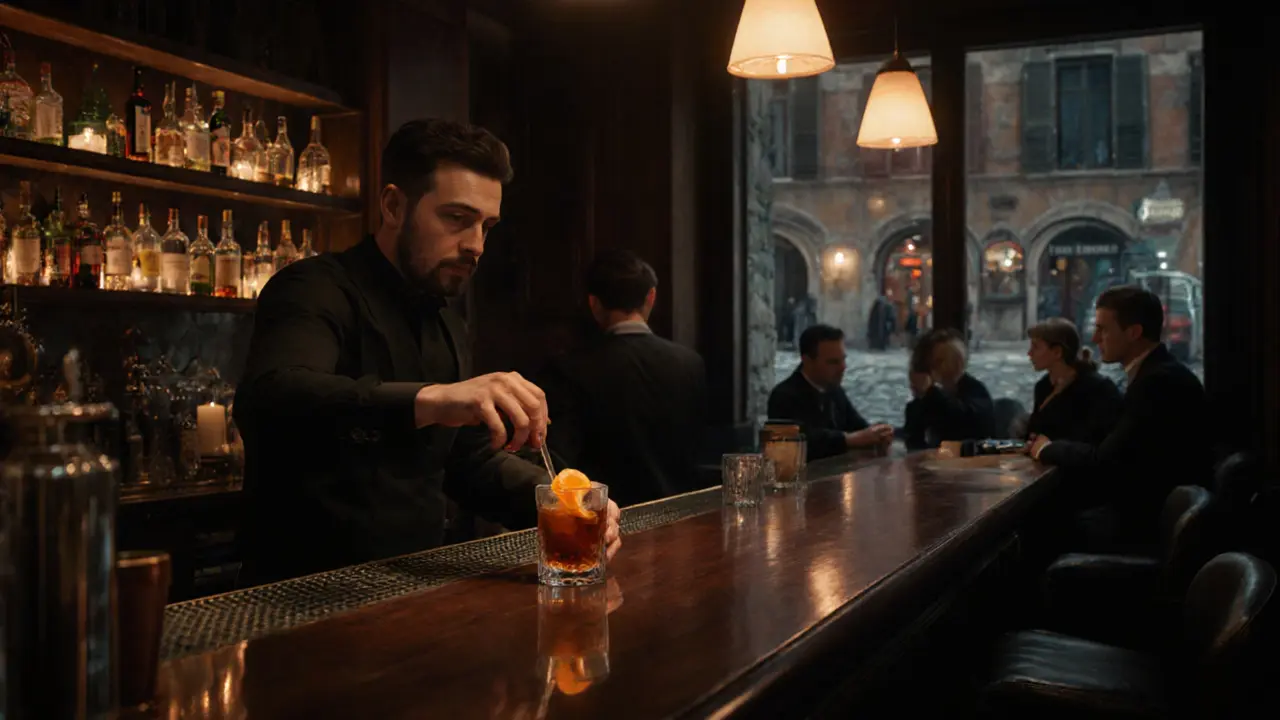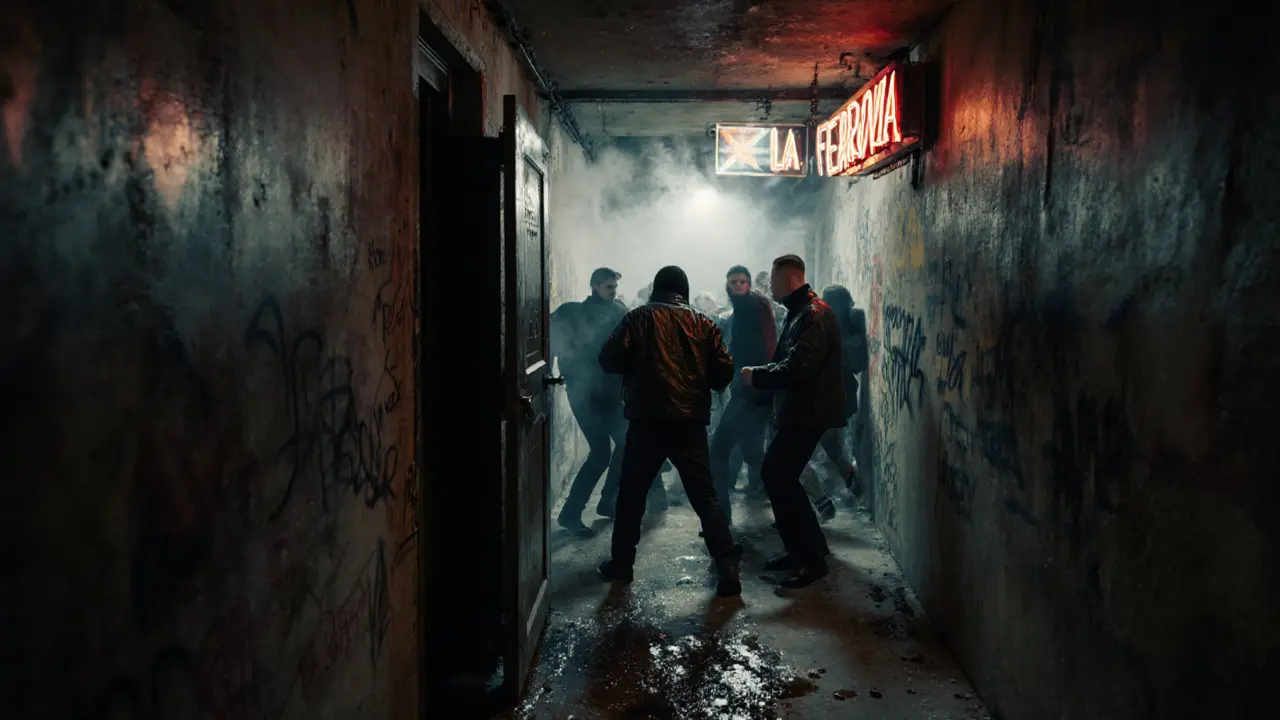Nightlife in Milan: Your Guide to the City's Best Bars, Clubs, and Late-Night Spots

Nov, 4 2025
Millions visit Milan for fashion, design, and food-but the real magic happens after dark. While tourists flock to the Duomo by day, locals know the city transforms when the sun sets. Milan’s nightlife isn’t just about dancing-it’s about style, rhythm, and a deep-rooted culture of evening ritual. You won’t find rowdy college bars or tourist traps here. Instead, you’ll discover hidden speakeasies, rooftop lounges with skyline views, and underground clubs where the music doesn’t start until midnight-and doesn’t stop until dawn.
Where the locals go: Navigating Milan’s neighborhood scenes
Milan doesn’t have one nightlife district-it has several, each with its own personality. Brera is the quiet cool kid. Narrow cobblestone streets lined with candlelit wine bars and jazz lounges make it perfect for slow evenings. Try Bar Basso, where the Americano was invented in 1945. It still serves the same recipe: 30ml Campari, 30ml sweet vermouth, soda water, and an orange twist. No frills. No gimmicks. Just history in a glass.
Porta Venezia is where the city’s creative crowd hangs out. Think colorful murals, vintage record shops, and bars that double as art galleries. La Scala (not the opera house) is a cult favorite for craft cocktails and vinyl nights. The bartenders know your name by the third visit. This is the neighborhood where you’ll find people in designer sneakers sipping mezcal negronis while debating the latest Milan Design Week exhibits.
For pure energy, head to Corso Como. It’s not a street-it’s an experience. The area around Corso Como 10 is a cultural hub: a boutique hotel, a design store, a restaurant, and a club-all under one roof. The club, Corso Como 10, opens at 11 p.m. and draws a mix of models, artists, and tech founders from across Europe. Dress code? Sharp. No hoodies. No flip-flops. The music? Deep house, techno, and rare disco cuts. The crowd? International, polished, and rarely loud.
Club culture: When the party really starts
In Milan, clubs don’t open at 10 p.m. They open at midnight. And they don’t close until 5 a.m. or later. The rhythm of the night here is slow-burning. People arrive in twos and threes, not in big groups. There’s no rush. No bouncers shoving people through doors. You’re expected to arrive with intention.
La Ferrovia, tucked under a train track near Porta Genova, is the city’s most legendary underground club. It’s not on Google Maps. You need a friend with a password. The entrance is through a metal door behind a pizzeria. Inside, the walls are concrete, the floor is sticky with spilled beer, and the sound system is one of the best in Europe. DJs here don’t play top 40-they play obscure 90s Italian techno and raw acid house. The crowd? Mostly locals in black turtlenecks and vintage leather jackets. It’s not for everyone. But if you’ve ever wanted to feel like you’ve stumbled into a secret European club scene from a 1997 film, this is it.
For something more polished, Magazzini Generali is a converted warehouse in the Navigli district. It hosts live electronic acts, experimental sound installations, and occasional fashion shows. The lighting changes with the music. The drinks are expensive-€14 for a gin and tonic-but the vibe is worth it. You’ll see people dancing barefoot on wooden platforms, sipping sparkling wine while watching a projection of Milan’s skyline fade into abstract shapes.
Bars that feel like home
Not every night ends in a club. Sometimes, it ends with a single glass of wine, good conversation, and a quiet corner table. Milan has dozens of these places. Il Gatto Nero in the Brera district is one of them. No sign outside. Just a small black cat painted on the window. Inside, the shelves are lined with 200+ Italian amari. The owner, Marco, will ask you where you’re from-and then recommend a digestif based on your answer. If you say you’re from New York, he’ll pour you a bitter Averna. If you’re from Tokyo, he’ll suggest a rare Sardinian myrtle liqueur.
For something sweeter, Bar Campari in the Porta Ticinese area is a retro gem. The walls are covered in 1950s posters. The bar stools are leather. The cocktails are made with real fruit, not syrups. Try the Disco-a mix of gin, elderflower, lemon, and a splash of soda. It’s light, fizzy, and perfect for a 1 a.m. wind-down.

What to wear-and what to avoid
Milan is Italy’s fashion capital for a reason. What you wear matters. You don’t need to look like a runway model, but you do need to look intentional. Men: dark jeans, clean sneakers or loafers, a fitted shirt or sweater. Women: tailored dresses, minimalist heels, or sleek trousers with a blazer. No baseball caps. No athletic wear. No visible logos. If you show up in sweatpants, you won’t get past the bouncer.
There’s an unspoken rule: if you look like you’re trying too hard, you’re already out of place. Milanese style is effortless. It’s about fit, fabric, and confidence-not brand names.
Timing is everything
Don’t show up at 9 p.m. expecting to dance. That’s when people are still eating dinner. Most restaurants in Milan don’t even start serving dessert until 9:30. The real nightlife begins after 11 p.m., peaks at 1 a.m., and doesn’t wind down until 4 a.m. Clubs like Armani Privé (the private club inside the Armani Hotel) start filling up around midnight. The music doesn’t kick in until 1:30 a.m. If you arrive early, you’ll be sipping champagne with a small group of fashion insiders who’ve been there since 11 p.m. waiting for the vibe to build.
Weekends are packed. Fridays and Saturdays are the only nights when you’ll need to book ahead. Sundays? That’s when locals go to La Scala for brunch DJ sets. It’s the perfect way to end the night-coffee, croissants, and deep house under a skylight.

How to get around after dark
Milan’s metro shuts down at 1:30 a.m. After that, you’re on your own. Taxis are reliable but expensive. Uber is legal but limited. The best option? Use Bolt or FreeNow. They’re cheaper and faster. If you’re heading to Navigli or Porta Venezia, consider walking. The streets are safe, well-lit, and beautiful at night. Many clubs are within a 15-minute walk of each other.
Don’t rely on your phone’s GPS. Some alleyways in Brera and Corso Como have no street numbers. Ask for landmarks: “near the red door,” “next to the bookstore with the blue awning.” Locals know the way. Don’t be afraid to ask.
When to go: Seasonal rhythms
Summer (June-August) is when Milan’s nightlife explodes. Outdoor terraces open across the city. The Navigli canals turn into open-air party zones. La Vite, a vine-covered terrace on the canal, serves wine by the liter and hosts live jazz on weekends. It’s packed-but worth it.
Winter is quieter, but more intimate. Many clubs close for a few weeks in January. But February brings the Milan Fashion Week party circuit. That’s when international DJs fly in, VIP guests arrive in private jets, and clubs like Magazzini Generali host exclusive after-parties. Tickets sell out weeks in advance. If you’re planning to visit during Fashion Week, book everything early-or skip it entirely. The crowds are overwhelming.
October through May? That’s the sweet spot. Fewer tourists. Better prices. Authentic energy. The locals are out, the music is strong, and the city feels alive without being overwhelming.
Final tips for a perfect night out
- Don’t go to Milan for the club scene if you want to dance to pop music. You’ll be disappointed.
- Bring cash. Many small bars and underground clubs don’t take cards.
- Learn two Italian phrases: “Un bicchiere di vino, per favore” and “Quanto costa?” (One glass of wine, please. How much?)
- Don’t take photos inside clubs unless you’re invited. It’s considered rude.
- Respect the silence. Milanese nightlife isn’t about shouting. It’s about listening-to the music, to the people, to the city.
Milan’s nightlife doesn’t shout. It whispers. And if you listen closely, you’ll hear why it’s one of the most compelling party scenes in Europe.
What time do clubs in Milan usually open?
Most clubs in Milan open at midnight, and the real energy doesn’t build until 1 a.m. or later. Don’t show up before 11 p.m.-you’ll be one of the only people there. The crowd arrives slowly, and the music starts later than you might expect.
Is Milan nightlife safe at night?
Yes, Milan is generally safe at night, especially in popular nightlife areas like Brera, Porta Venezia, and Navigli. The streets are well-lit, and there’s a strong police presence near clubs. Avoid poorly lit alleys after 3 a.m., and never leave drinks unattended. As in any major city, use common sense.
Do I need to book tickets in advance for clubs in Milan?
For popular clubs like Magazzini Generali or Armani Privé during weekends or Fashion Week, yes. Many smaller venues don’t require tickets, but you’ll often need to RSVP via Instagram or WhatsApp. Always check the club’s official page before heading out.
What’s the dress code for Milan nightclubs?
Smart casual. No hoodies, no sneakers with socks, no flip-flops. Men: dark jeans, button-down shirt, clean shoes. Women: tailored dresses, sleek pants, or a stylish top with heels. The goal isn’t to look flashy-it’s to look intentional. Bouncers notice when you’re trying too hard-or not trying at all.
Are there any LGBTQ+ friendly spots in Milan’s nightlife?
Yes. Bar Basso and La Scala are welcoming to all. La Vite on the Navigli has regular drag nights and queer DJ sets. For a dedicated LGBTQ+ venue, head to Club 81 in the Porta Venezia area-it’s been a safe space since the 1980s with weekly themed nights and open dance floors.
Can I find English-speaking staff in Milan’s bars and clubs?
In tourist-heavy areas like Corso Como and Navigli, yes. Staff at upscale bars and clubs usually speak fluent English. In smaller, local spots like Il Gatto Nero or La Ferrovia, you might get by with basic Italian or gestures. Learning a few phrases goes a long way.